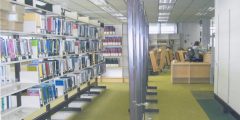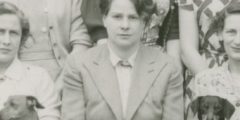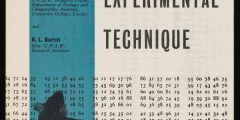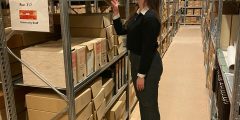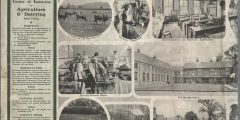The day Mahatma Gandhi came to Beeston
July 15, 2024
On 17 October 1931 crowds gathered at the small railway station in Beeston, Nottinghamshire. It was a chilly afternoon, but that did not dampen the excited anticipation of the spectators. When they eventually saw him disembarking from the train, the watchers fell silent, curious. Clad in loincloth and sandals, with a shawl to protect him …
George Green Library: Then and Now
June 18, 2024
To commemorate 60 years since the opening of George Green Library, Tracey O’Sullivan, Library Advisor, shares her memories and photographs from working there since 1985. Imagine the scene: no computers, no mobile phones, no Wi-Fi, no laptops, no self-service machines, just lots of books, journals and the like; card index cabinets and photocopier machines that …
Audrey Beecham: Warden, historian, poet, anarchist, feminist, and champion of the underdog
March 1, 2024
Helen Audrey Beecham (1915-1989) came to the University of Nottingham in 1950 having been appointed warden of the newly built Nightingale Hall, which at the time was a women-only hall of residence. She served as warden and also lecturer in social and economic history for 30 years until her retirement in 1980. Before coming …
Advocates for animal welfare: The Three Rs
June 30, 2023
Debate has long raged about the use of animals by humans, both as food and for the advancement of science. The National Anti-Vivisection Society was founded back in 1875 and the British Union for the Abolition of Vivisection in 1898, by Frances Power Cobbe, campaigner for women’s suffrage and anti-vivisection activist. The Cruelty to Animals …
History of the James Cameron-Gifford Library, Sutton Bonington Campus.
April 23, 2023
Dr James Cameron-Gifford was a leading agriculturalist born in 1909. He first came to Nottingham in 1942 when he was appointed as Technical Officer with the Nottingham War Agricultural Committee. The object of the committee was to increase the county’s food production, and among the many tasks allotted to Cameron-Gifford was the development of a …
Advocates for animal welfare
December 1, 2022
Work has just finished on an 18-month project to catalogue papers held by Manuscripts and Special Collections which chart the progress made in promoting the concept of the Three Rs, the guiding principles of Reduction, Replacement and Refinement, in regards to the use of animals in scientific research. The work was made possible by a …
My experience interning for Manuscripts and Special Collections
September 27, 2022
This is a guest post by Helena, who successfully applied for a Faculty of Arts funded summer work experience placement. I’m Helena, a second-year History student at the University of Nottingham and I had the amazing experience of getting a placement and working at King’s Meadow Campus for a couple of weeks. My role was …
Remote volunteering: tackling transcriptions
July 11, 2022
This is a guest post by Manuscripts and Special Collections volunteer, Emily Williams, who worked with digitised versions of analogue recordings for a remote placement devised especially for providing careers experience when we were unable to host volunteers in our reading room. Commencing in the summer of 2020, I was given the opportunity to complete …
George Green Library: A Photographic History
April 6, 2022
George Green Library, originally known simply as the Science Library, was one of various buildings funded in the 1950s and 60s which signalled a massive investment in science teaching and research at the University of Nottingham, facilitated by the Vice Chancellor of the time, Bertrand Hallward. Although the proposed Science Library was originally conceived to …
Highlighting the History of Sutton Bonington
March 22, 2021
Originally, Sutton and Bonington were two settlements, probably originating in Anglo-Saxon times. The two villages gradually grew together and by 1340 had become “Sutton Bonynton”. Today, the villages host to the University of Nottingham’s rural campus. An insight into 17th century Sutton Bonington is provided by a presentment bill dating from 1632, which forms part …


